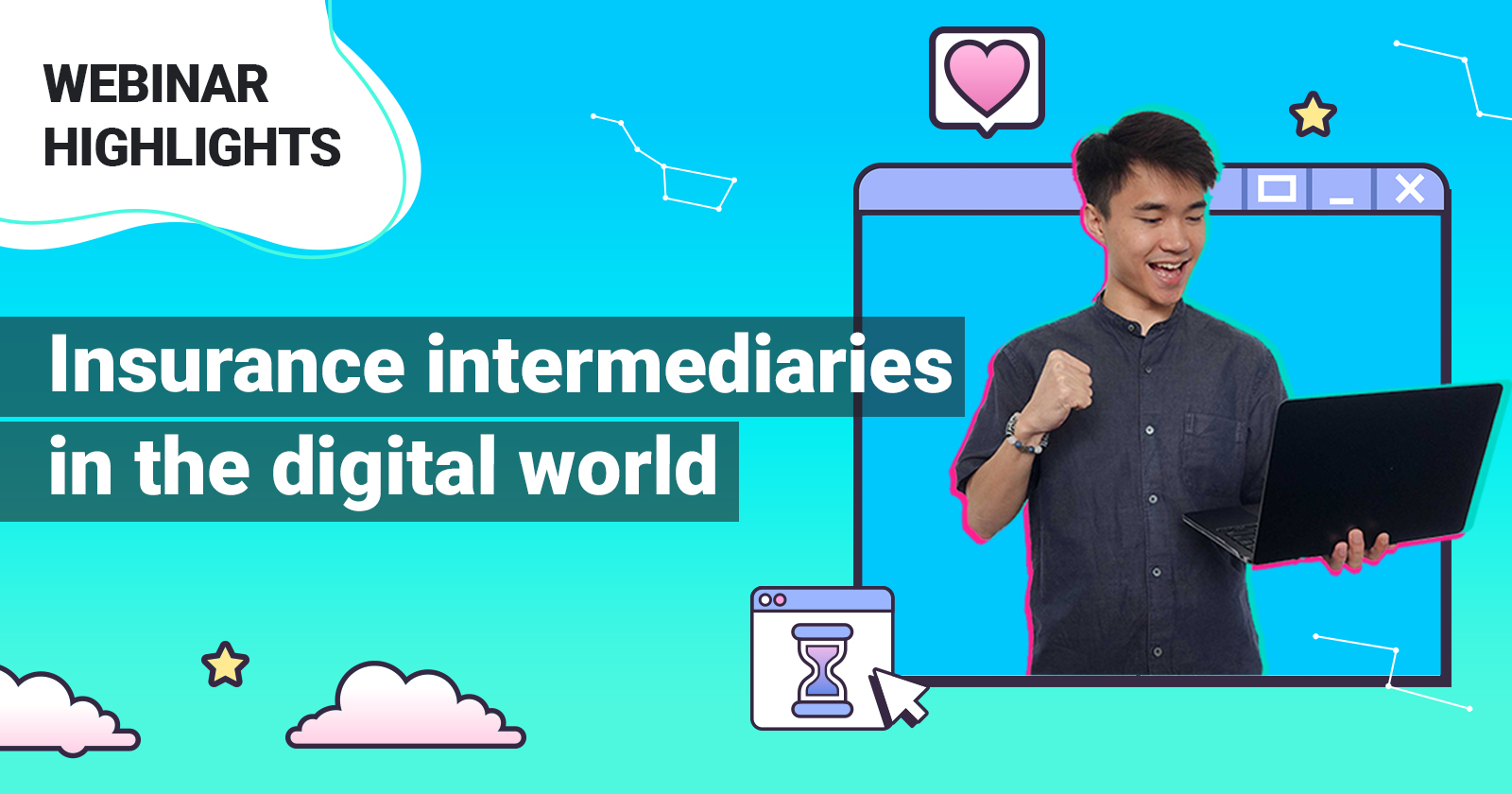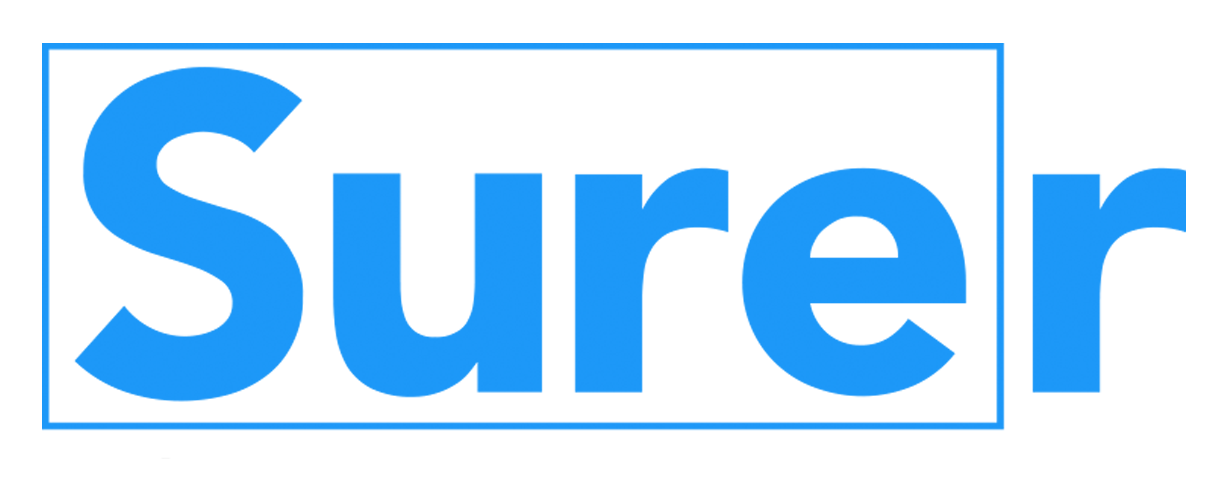
Thank you to everyone who attended this webinar that happened on 30 May ‘23! As always, fret not if you missed out on this webinar. This article will bring you highlights of what was shared at the webinar! As shared at the webinar, we are excited to announce that our biggest feature release yet – Personal Website Builder – is now available to ALL Surer users for FREE! With the theme of the webinar being ’Insurance Intermediaries in the Digital World’, we broke the webinar down into four key segments: The seminar started with a sharing of the importance of digital transformation. Four key reasons were shared to drive home the point of the importance of digital transformation for insurance intermediaries. 1) TQ is as important as IQ and EQ 2) Allows intermediaries to be an advisor not an order taker 3) Bespoke products vs packaged products 4) Client-first mindset In establishing the reasons for an intermediary to digitally transform, the speaker then shared how such a new age intermediary will not be easily replaced for the following reasons. Supercharging the efficiency of the sales force Not disrupting for the sake of it Enhancing your value with technology The speaker shared that in summary, digital transformation is important because it allows intermediaries to serve the client with more care AND digitalisation is here, not to replace this relationship, but to supercharge it! The topic then shifted on to have a view of what the industry is thinking when it comes to an intermediaries’ place in the digital world. The speaker then ran through a number of articles and picked out key points to be digested. Article referenced: 2022 insurance industry outlook Article referenced: How Agents and Insurtechs Can Work Together Article referenced: 5 reflections on the insurance industry in 2021 Establishing that the trend of tech is to build towards supercharging intermediaries, the speaker than shared a number of reasons on why this is the case. As advisors to the policyholder Saving time spent on searching and researching Bringing certainty to uncertainty Having shared about the tech trend that is moving in the direction of supporting not replacing the intermediary and the reasons for such, the speaker then moved on to share some internal research done by Surer. This was to share the pain points Surer believes are hindering intermediaries; only when one understands the pain points, can you build tech solutions to solve them. Top pain point faced… Tedious quote sourcing practices Manual, labour intensive tracking of deals Slow network growth The webinar then jumped to the next segment in which the speaker shared how intermediaries could better understand the mindset of a client and how that would be relevant in terms of engagement via digital means. Understand the client’s decision making process Before considering how best to engage a client, it is important to know how they typically make a decision. The 7 stages of a decision making process The speaker deep-dived into stages 1, 2 and 5… Stage 1: Identify the decision to be made Stage 2: Gather relevant information Stage 5: Choose among alternatives The speaker then shared some tips around content creation in the digital world that could help with engagement. In terms of content creation, we shared that it should not be something that intermediaries should fear or think of as ‘I am not an expert in content creation – how?’ Rather, intermediaries already have very key knowledge and experience in the space and sharing any of these WOULD BE good content. The key points shared on this front: It was further shared that engagement is one thing, managing clients that have been brought into the funnel is another. In the digital world, there are CRM tools aplenty to help intermediaries to do this. However, the speaker was keen to share what intermediaries need to discern to decide what is the best CRM tool for their purpose. In theory, CRM = Customer Relationship Management. A tool to: For the intermediaries, they should consider that this CRM helps on the following front: The speaker then summarised this segment by sharing that intermediaries need to first understand the mindset of the customer, then decide on how to engage them and what tech tools should be leveraged for such engagement. The final segment of the webinar was focused on the practical digital tools that intermediaries could leverage. Before sharing such, the speaker shared a section of ‘Myth vs Facts’ when it comes to digital tools. To help intermediaries to discern what they should look out for. MYTH 1: Productivity solutions add more layers to and complicates tasks MYTH 2: These productivity solutions help you multitask MYTH 3: These productivity solutions overly up-play the value of task tracking MYTH 4: Productivity solutions overload us with information and forces us to be ‘always-on’ A feedback that the team had gotten was that we should include the showcase of tangible features / functions that intermediaries can leverage; to be able to draw parallels between what has been shared and what can be used. The speaker did exactly that by sharing some of Surer’s features that helps an intermediary digitally transform. Personal Website Builder Product Customisation and creating your own ‘package’ template Instant Quote Binding and issuing policies CRM features The parallels of tech helping to drive leads, qualification and speed in deal closing were drawn in relation to the above features was shared to be as follow: — Once again, here’s taking the opportunity to thank all our users who made time for this and we hope to see you again in our next Webinar! Subscribe to our Telegram channel or stay tuned to our Facebook or LinkedIn pages to get updates on more of such initiatives! It is fuss-free. No credit card or payment required.
Did you know you can launch your personal website for free via Surer?
Find out more >>> Key highlights
Transforming in the digital world
Importance of digital transformation
Why the new age intermediary cannot be replaced
Outlook of the insurance industry vis-a-vis the digital world
Reading into what is being written
What intermediaries bring to the table
Decoding intermediaries’ pain points
Customer engagement in the digital world
Content for engagement
As long as this channel allows you to write/create video, a url is generated when posted and can easily be shared… you are good to go! FB, Linkedin posts (like literally the post itself), tiktok or even a google drive collection of doc or pdf!
There are various styles of content like The “How-To” Post, The listicle type post, Thought-leadership post and Newsjacking
Value of content creation is a long-tail one. It might not be immediately relevant to the recipient today but actively and continuously engaging them with different topics gives you that chance to one day hit them when they need it the most. When the time comes when they need your service or have a friend who is asking them for recommendations, that you will come top-of-mind.What is a CRM system and what it should do?
A CRM for your business should help you be well aware of the status of a deal at any point. This does not mean furiously updating SPREADSHEETS. It should be a system that allows for automation in generating a ‘case file’.
“I need to go back to their excel spreadsheet to update it”, “I need to let all parties involved (like the underwriter) know about it”, “I need to get policy and share with client” etc. etc. etc. etc. etc. etc. – these were some examples the speaker had shared of what you SHOULD NOT be doing when you have a proper CRM tool. A proper CRM would have all of those tasks fully automated.
A proper CRM tool would help intermediaries digitalise policy file storage, track your business and sales performance, track premium collection status, track and record anything peculiar about the deal and of course easy renewals in future.Leveraging what the digital world provides to drive business efficiency
Myths about business productivity solutions
Leveraging Insurtech: Surer case studies
Are you an Insurance intermediary? Sign up for free now!
Subscribe to our Telegram channel to get the most insightful articles delivered to you automatically!
